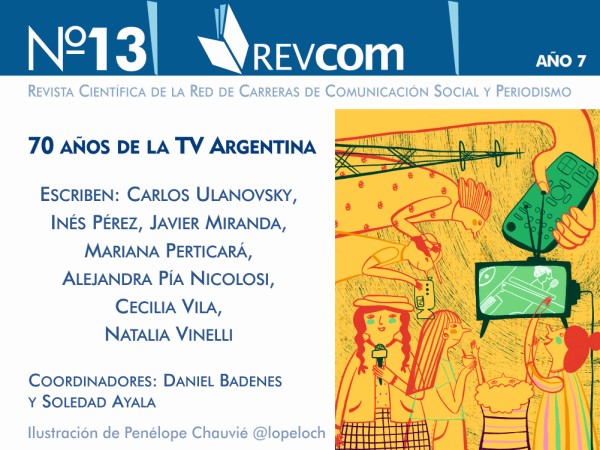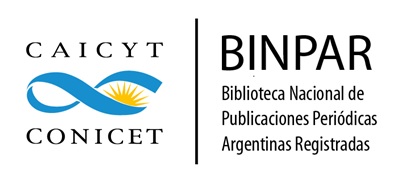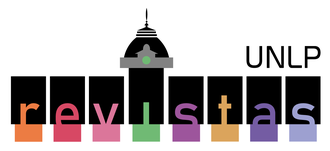Television and domestic: class marks and gender inequalities
Mar del Plata on the sixties
DOI:
https://doi.org/10.24215/24517836e062Keywords:
television, usages practices, class marks, gender inequalitiesAbstract
The present article takes up the main findings of an investigation on the introduction of television sets in Mar del Plata households in the middle decades of the twentieth century (Pérez, 2012). The main objective of the research is to think how some of the dynamics observed in the middle of the century allows us to analyze the changes that have taken place in the last decade. In this sense, the text is organized in two different sections that investigate, on the one hand, how the dissemination of television allowed the construction of class distances, and, on the other hand, what was the gender markers of television and television consumption. In both cases, spatiality and temporality are key dimensions of the analysis in this research, both in terms of the importance of regional differences and the possibility of thinking about the history of television in a situated way, but furthermore in relation to the manners in which the boundaries between the public, the private and the domestic, in the home and in the neighbourhoods, were constructed.
Downloads
Metrics
References
Abu-Lughod, L. (2005). La interpretación de la(s) cultura(s) después de la televisión. Etnografías contemporáneas, 1(1), 1-24.
Aguilar, G. (1999). Televisión y vida privada. En F. Devoto y M. Madero, Historia de la vida privada en la Argentina. La Argentina entre multitudes y soledades, de los años treinta a la actualidad (pp. 255-283). Ciudad Autónoma de Buenos Aires, Argentina: Taurus.
Morley, D. (2002). Television. Not so much a visual medium, more a visible object. En C. Jenks (Ed.), Visual Culture (pp. 170-189). New York, United States: Routledge.
Murillo, S. (2006). El mito de la vida privada. De la entrega al tiempo propio. Madrid, España: Siglo XXI.
Pérez, I. (2012). El hogar tecnificado. Familias, género y vida cotidiana, 1940-1970. Ciudad Autónoma de Buenos Aires, Argentina: Biblos.
Silverstone, R. (1996). Televisión y vida cotidiana. Ciudad Autónoma de Buenos Aires, Argentina: Amorrortu.
Spigel, L. (1992). Make Room for TV. Television and the Family Ideal in Postwar America. Chicago, United States: The University of Chicago Press.
Spigel, L. (2001). Welcome to the Dreamhouse: Popular Media and Postwar Suburbs. London, United Kingdom: Duke University Press.
Varela, M. (2005). La televisión criolla. Desde sus inicios hasta la llegada del hombre a la Luna, 1951-1969. Ciudad Autónoma de Buenos Aires, Argentina: Edhasa.
Wainerman, C. (2007). Mujeres que trabajan. Hechos e ideas. En S. Torrado (Comp.), Población y bienestar en la Argentina del primero al segundo Centenario. Una historia social del siglo XX. (pp. 325-352). Tomo II. Ciudad Autónoma de Buenos Aires, Argentina: Edhasa.
Published
How to Cite
Issue
Section
License
Copyright (c) 2021 RevCom

This work is licensed under a Creative Commons Attribution-NonCommercial-ShareAlike 4.0 International License.
Politica vigente desde octubre de 2019
La aceptación del manuscrito por parte de la revista implica la cesión no exclusiva de los derechos patrimoniales de los/as autores/as en favor del editor, quien permite la reutilización, luego de su edición (postprint), bajo una Licencia Creative Commons Atribución-NoComercial-CompartirIgual 4.0 Internacional (CC BY-NC-SA 4.0)
Acorde a estos términos, el material se puede copiar y redistribuir en cualquier medio o formato siempre que a) se cite la autoría y la fuente original de su publicación (revista y URL de la obra), se brinde el acceso a la licencia y se indique si se realizaron cambios; b) no se utilice el material para fines comerciales.
La cesión de derechos no exclusivos implica que luego de su edición (postprint) en RevCom los/as autores/as pueden publicar su trabajo en cualquier idioma, medio y formato; en tales casos, se solicita que se consigne que el material fue publicado originalmente en esta revista.
Tal cesión supone, también, la autorización de los/as autores/as para que el trabajo sea cosechado por SEDICI, el repositorio institucional de la Universidad Nacional de La Plata, y sea difundido en las bases de datos que el equipo editorial considere adecuadas para incrementar la visibilidad de la publicación y de sus autores/as.
Asimismo, la revista incentiva a los/as autores/as para que luego de su publicación en Revcom depositen sus producciones en otros repositorios institucionales y temáticos, bajo el principio de que ofrecer a la sociedad la producción científica y académica sin restricciones contribuye a un mayor intercambio del conocimiento global.






.jpg)



.png)






















